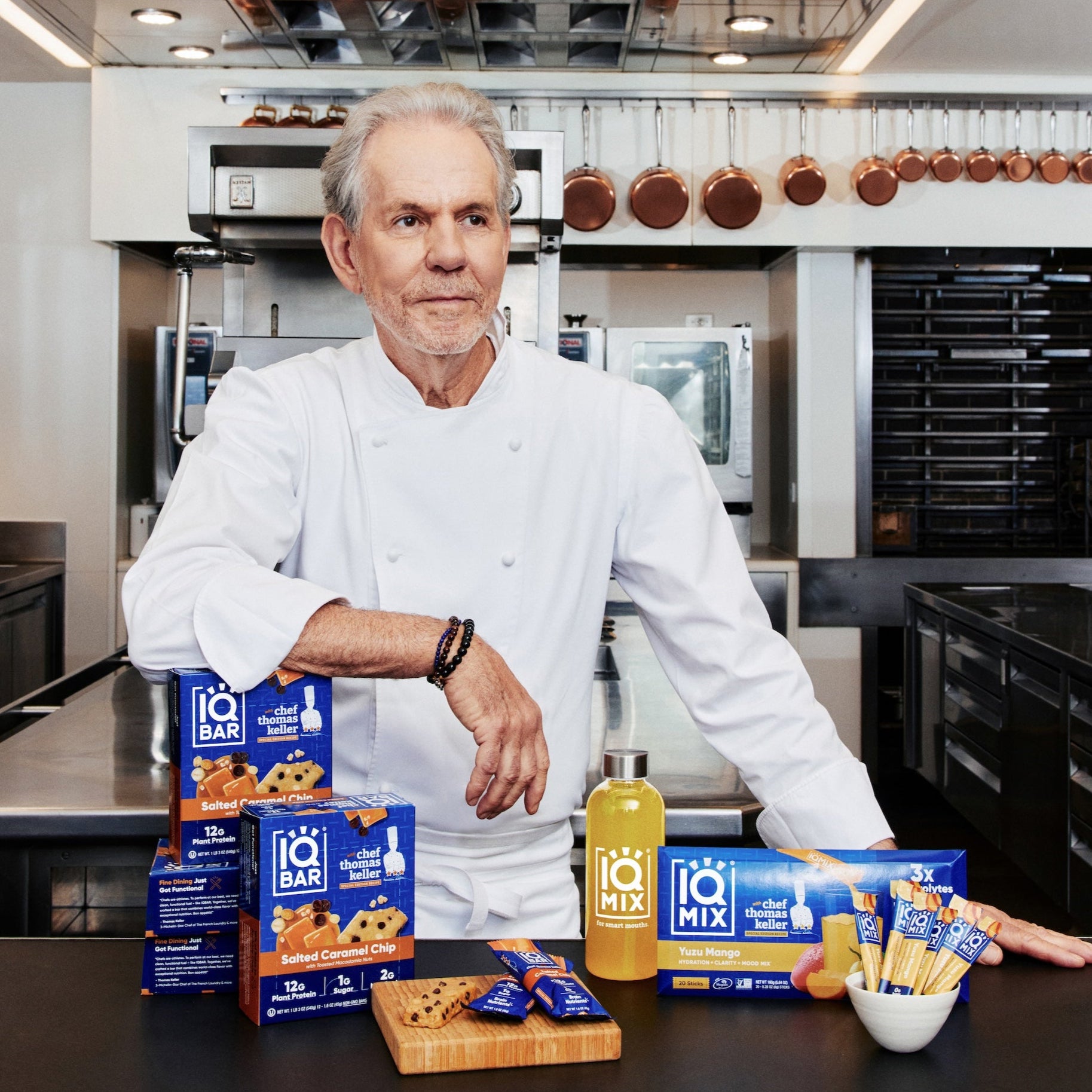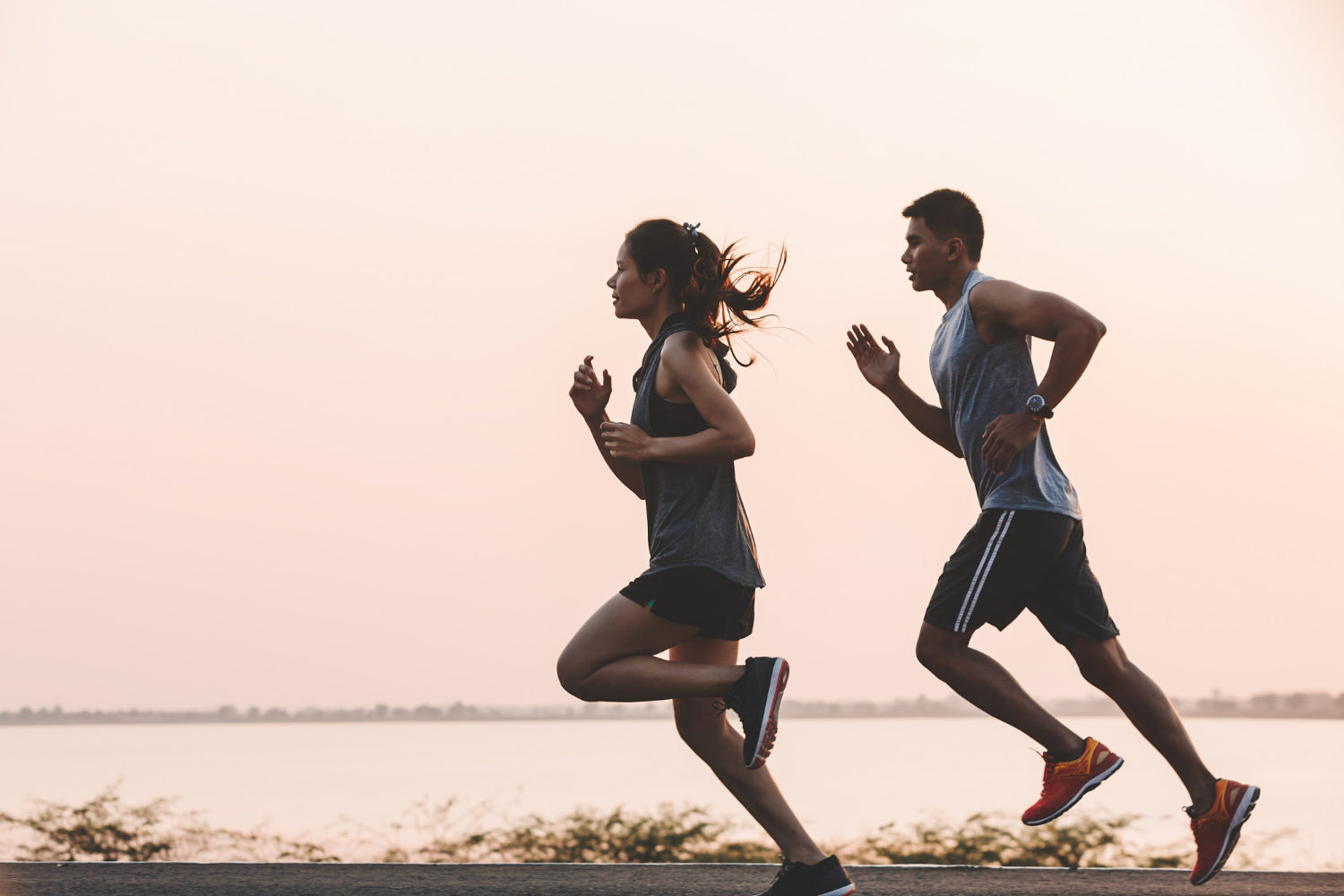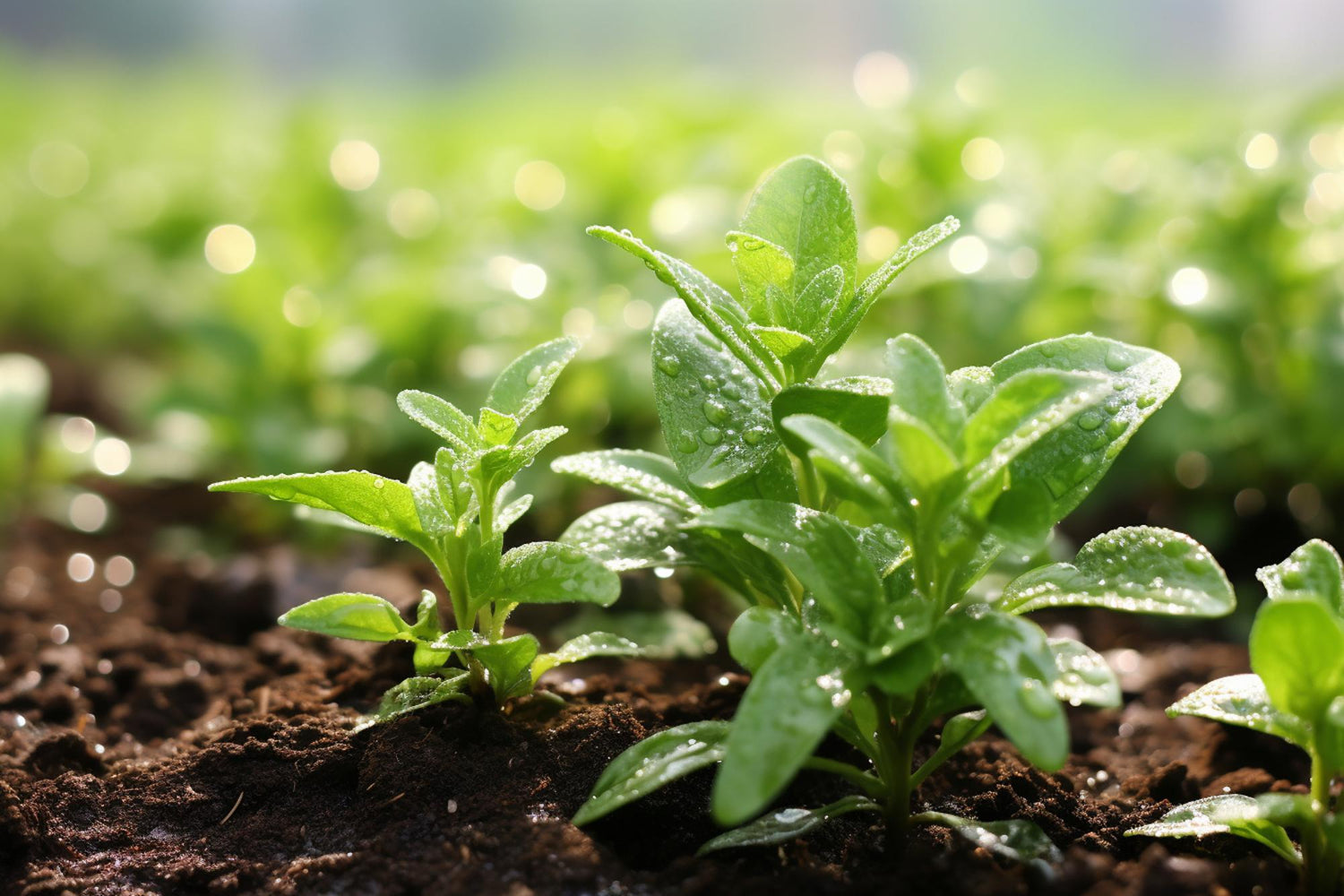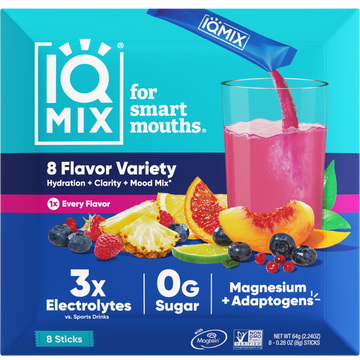Think you know how to take electrolytes for exercise? Consider this:
In one study of NCAA Division I athletes, more than 97% of students knew dehydration would decrease performance, yet 66% of them were in a state of dehydration pre-practice.[*] Time for an electrolyte cram sesh?
These tiny electrical wizards don’t just regulate muscle function, nerve impulses, and hydration — they can help you push your limits, conquer your fitness goals, and bounce back after the most intense workouts. Science also says they play a key role in injury prevention, muscle growth, and recovery.
So, let’s crack open the books on why electrolytes deserve a top spot in your pre- and post-workout regime. Then, we’ll give you a cheat sheet for how to fuel your body for optimal performance.
Electrolytes 101 ⚡
Electrolytes are essential minerals that carry an electric charge in your body.[*] They direct the flow of fluids and electrical signals between your cells and muscles, telling your muscles to contract, your nerves to fire, your heart to beat, and supporting a zillion other bodily functions.
The most important electrolytes include sodium, potassium, chloride, magnesium, calcium, phosphate, and bicarbonates. We can get these from the top dietary electrolyte sources, but they don’t hang out forever.
Anytime you lose body fluid — whether through urination, sweating, going #2, or even breathing — you also lose these essential minerals. Lose more fluids (and electrolytes) than you take in, and you cross over to the dark side of dehydration.[*]
Electrolytes are so vital that losing just 1–2% of body weight via fluid loss can lead to declines in physical and mental performance.[*] That brings us to:
6 Ways Electrolytes Pump Up Your Performance & Recovery
Balancing your electrolyte levels can help you:
1. Stay Adequately Hydrated
Electrolytes help regulate your body’s fluid balance, ensuring there’s enough water and nutrients inside and outside of your cells.[*] Science calls this perfect state of fluid and electrolyte balance hydration.[*]
It’s natural for our hydration levels to tank when we’re exercising — especially when we’re sweating or being physically active in hot or humid environments. Sweating is your body’s internal temperature control. As it evaporates on your skin, it cools you down and empowers you to continue your intense exercise without overheating.
We tend to compensate for this by drinking water. Unfortunately, guzzling plain H2O can dilute the amount of electrolytes in your body so much that they practically disappear. This is known as overhydration, and it’s one of the top causes of electrolyte deficiencies.[*]
Good news? Electrolytes attract and hold water. They can help your body retain the fluid it needs to prevent dehydration and ensure you finish your workout sessions strong.
2. Reduce Cardio Stress
Electrolytes help stabilize your blood pressure, heart rhythm, and heart rate.[*][*]
Dehydration throws a wrench into this operation. It can elevate blood pressure, decrease blood flow, and impair your body’s ability to regulate its temperature.[*] These are major stressors for your cardiovascular system and may lead to heat stroke, heat exhaustion, or potentially dangerous heart events.[*]
Luckily, pre-exercise hydration can prevent, delay, or reduce cardiovascular strain and these adverse effects.[*] In one meta-analysis, nine studies showed a decrease in average heart rate, and eight studies reported a drop in average core temperature with proper hydration.[*]
3. Improve Muscle Function and Performance
Electrolytes send signals to make your muscles jump and lift with precision. But when you’re low in electrolytes, you’re more prone to muscle cramps, muscle weakness, and decreases in power and strength.[*][*][*][*] These side effects may make completing your reps feel impossible.
Good news? Preventing electrolyte loss may improve athletic performance, specifically grip strength, lower body power, jumping, and more.[*][*]
4. Boost Energy Levels and Endurance
Ever felt like your legs turned into lead weights halfway through your exercise session? Electrolyte depletion may be the culprit — studies show mild dehydration can decrease your exercise endurance by 10%![*]
But you don’t have to hit that wall and throw in the towel. Replenishing these minerals can keep your motivation meter in the green zone, pushing you towards that extra set or conquering that final hill.[*]
5. Realize Muscle Gains
Adding more lean muscle to your body helps you burn more calories at rest and reshape your body composition. But if you’re dehydrated while pumping iron, you’ll prevent your muscles from actually growing and waste a ton of time and effort in the process.[*]
6. Recover Like a Champ
Electrolyte imbalances are a major culprit behind post-workout cramps and muscle soreness. But since they help increase blood flow, replenishing them can also escort essential nutrients your muscles need to speed up repair and reduce soreness and cramps.[*][*]
Electrolytes like magnesium also promote relaxation, so you can give your body the rest it needs to bounce back faster and stronger for your workouts the next day.[*]
So, now that you know all these perks, what is the best time to take electrolytes?
How To Take Electrolytes for Exercise
Timing your electrolyte intake could mean the difference between keeping up and tapping out. Follow this 3-step game plan to score your new personal bests:
1. Start with Pre-Workout Prep
We know that sweat and exercise will deplete our hydration levels. If we’re already low in these departments, we’ll be in a bigger hole post-workout. That’s why experts say it’s crucial to hydrate before exercise.[*] The drop will be more like a step down than a giant fall.
Trainers recommend drinking 16 ounces of water or electrolyte beverages 2–3 hours before your workout, then an additional 6–8 ounces 10–20 minutes before exercise.[*] Your body should have enough time to process those fluids and get those electrolytes where they need to be.
2. Sip On Electrolyte Water During Your Workout (Not Sugary Sports Drinks!)
Your sweat rate increases in proportion to your intensity, exercise duration, and the temperature and humidity of your environment.[*] So, your fluid replacement should equal what you’re losing. That’s why some sports nutrition experts recommend drinking 7–10 ounces of electrolyte-infused water every 10 to 20 minutes.[*]
Other trainers say it’s better to drink water according to your thirst. This allows your body to naturally regulate its fluid balance, taking in the perfect amount of water you need to function at your best.
Whatever you choose, follow these two simple rules:
- Never chug! Gulping H2O can make you feel nauseous, especially if you’re engaging in high-intensity activities, bending over, or jumping.
- Ditch the sugar-flavored sports drinks. Your classic Gatorade or Powerade may contains artificial colors and up to 40 grams of sugar and carbohydrates per bottle, which are disastrous for your health.[*][*] Science shows you don’t need sugar to facilitate hydration or electrolyte absorption, so it’s time to say sayonara to them for good.[*][*][*]
💦 Check out this guide on Why You Should Opt for Electrolyte Drinks Without Sugar for more on this topic.
3. Prioritize Electrolytes During Your Post-Workout Recovery
Post-activity hydration corrects any fluid loss experienced during your workouts.[*] But gulping gallons of plain water won’t help you ace electrolyte replacement.[*]
Rehydration is the process of restoring fluid balance by replacing both water and electrolytes. It helps you combat dehydration without crossing into overhydration territory.[*]
Experts say you shouldn’t rush this process, as drinking too much too quickly will only cause more frequent trips to the bathroom. A better strategy is to steadily drink your electrolyte beverage over several hours, starting within 30 minutes of wrapping up your workout.[*]
💪 Adding a sugar-free hydration supplement like IQMIX to your water bottle will replenish both water and electrolytes lost through sweat in every sip!
IQMIX: Because Hydration Shouldn’t Be a Chore
Coconut water and the best homemade electrolyte drinks can help you stay hydrated. But we have an easier, lower-carb solution: IQMIX.
Unlike artificially-colored sports drinks, IQMIX is non-GMO, sugar-free, vegan, and keto-friendly. Each super-tasty gym-ready sleeve contains 3x the electrolytes of sports drinks to help you prep, thrive, and recover like a champ, including:
- 500 mg of sodium
- 450 mg of potassium
- 750 mg of Magtein®, a clinically studied form of magnesium (magnesium L-threonate) that supports mental performance and better moods.
Plus, IQMIX contains 250 mg of super-concentrated lion’s mane mushroom — an adaptogen that elevates your brain health, lowers stress levels, and boosts your cognitive prowess.[*]
😅 Want to look forward to sweating? Our lineup of highly-rated Peach Mango, Blood Orange, Blueberry Pomegranate, and Lemon Lime flavors makes rehydration the best part of your workout!
You Get What You Put In
Prioritizing your hydration at all stages of your exercise regime will skyrocket your fitness and overall wellness to new heights. You’ll tap into your full potential, beat personal records, and finish every workout stronger than before. When you give the human body the minerals it needs to perform its best, you’ll always reap the rewards.
🔥 Sweat, rehydrate, and repeat! The IQMIX Variety Pack ensures your taste buds are never bored!
Byline: Written by Lauren Ciccarelli, a writer and research geek passionate about low-carb nutrition, mental health, and meditation. Her 2,500+ articles empower doers with science-backed tips for leveled-up living.




